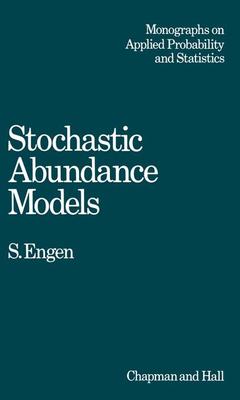Stochastic Abundance Models, Softcover reprint of the original 1st ed. 1978 With Emphasis on Biological Communities and Species Diversity Monographs on Statistics and Applied Probability Series
Langue : Anglais

This monograph deals with the analysis of populations of elements. Each element is a member of one and only one class, and we shall mainly be concerned with populations with a large number of classes. No doubt the present theory has its outspring in ecology, where the elements symbolize the individual animals or plants, while the classes are the various species of the ecological community under consideration. Some basic ideas point back to a classical contribution by R.A. Fisher (1943, in collaboration with A.S. Corbet and c.B. Williams) representing a breakthrough for the theoretical analysis of diverse populations. Though most of the work in this field has been carried out by ecologists, statisticians and biometri cians have, over the past 15 years, shown an ever increasing interest in the topic. Besides being directed towards biometricians and statisticians, this monograph may hopefully be of interest for any research worker dealing with the classification of units into a large number of classes, in particular ecologists, sociologists and linguists. However, some background in statistics and probability theory is required. It would be unless to read the present book without some knowledge of the continuous and discrete probability distributions summarized in section 1.1, and the use of generating functions. In particular, a clear intuitive and formal understanding of the concept of condi tional probability and conditional distributions is required in order to interpret the various models correctly.
I: Theoretical Treatement.- 1. Introduction.- 2. Sampling from a Population of Classes.- 3. Abundance Models.- 4. Sample Coverage.- 5. Indices of Diversity and Equitability.- II: Ecological Applications.- 6. Abundance Models in Ecology.- 7. Abundance Models in Ecology—Examples.- References.- Appendix A: The Structural Distribution for the Model dealt with in Example 2.4.- Appendix B: Tables.- Author Index.
Date de parution : 02-2012
Ouvrage de 126 p.
14x21.6 cm
Mots-clés :
Parameter; probability; probability distribution; probability theory; statistics
© 2024 LAVOISIER S.A.S.



